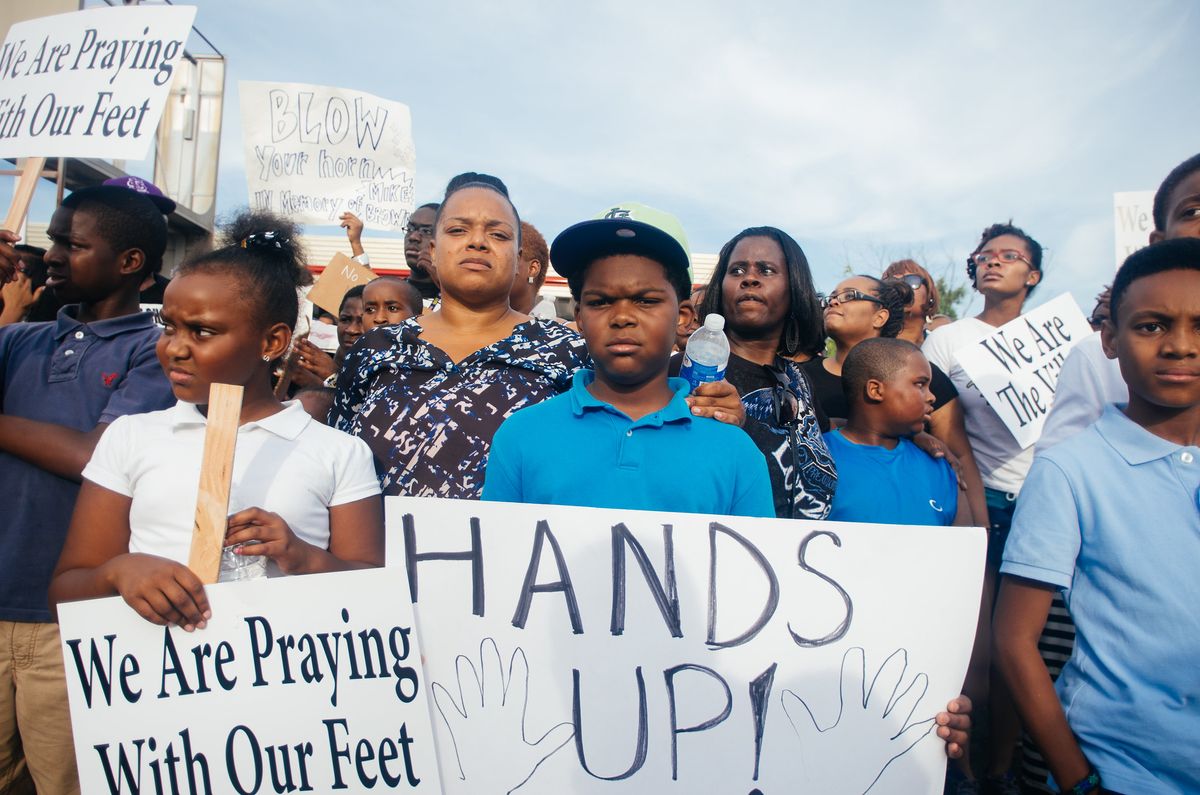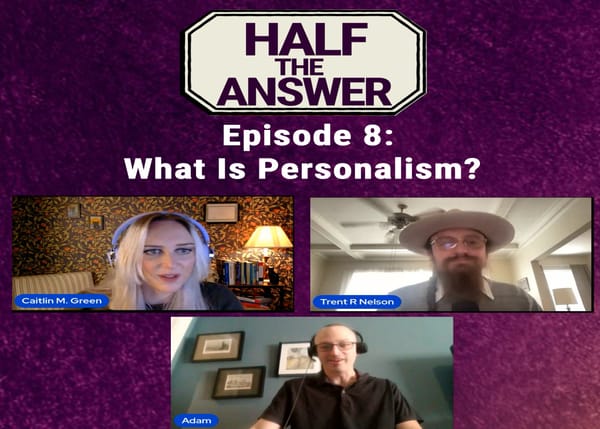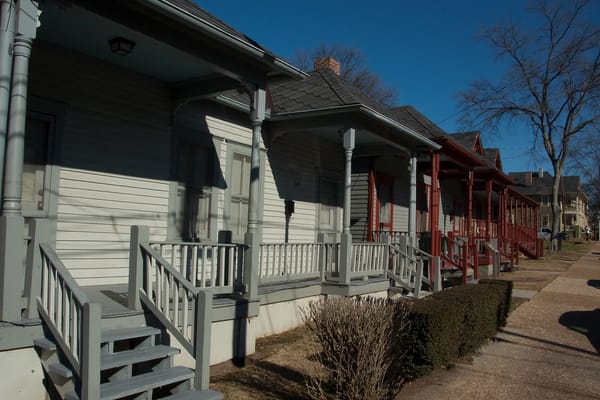How I Became an Anti-Racist

The murder of George Floyd under the knee of a Minneapolis police officer has once again brought the issue of systemic racism, police violence, and criminal justice reform to the forefront of the American national conversation, in print and in the streets. As part of that conversation, Liberal Currents solicited thoughts from some of our writers about what books, ideas, or personal experiences caused them to embrace the term “anti-racist” as a way of thinking through, and acting on, issues of racial injustice in the world. These are their replies.
Adam Gurri
I don’t know that I have earned the “anti-racist” designation given how little I have done, but I can tell my story in brief. I grew up believing I was anti-racist by virtue of having Martin Luther King, Jr. and Rosa Parks canonized alongside the other saints of the American democratic religion. But with time and age came doubt, a gnawing feeling, a feeling that James Baldwin captured perfectly in “The White Man’s Guilt;” a desire for complete exoneration without effort, so that I might enjoy an uncomplicated pride in “that history for which” I did not “wish to pay, and from which” I had gained so much.
There is one particular friendship that did more than anything to move me towards anti-racism in the sense meant here, a civil libertarian who kept me fed on a steady diet of Radley Balko coverage of police brutality as well as Popehat and other legal blogs who covered the prosecutorial and judicial side of the matter. I began as a skeptic but years of reading and conversations moved me substantially his way.
The success of Trump politically was a kind of final confirmation. The fact that people who for years had skirted the line of plausible deniability acted as though Trump’s naked racism fit into that category said something very unnerving about either where we were heading or who we already were. I have tried with my whole heart to learn more about the past and present of racism in this country since then, and to publish anti-racist voices. I have tried not to remain, as Baldwin put it, “like a butterfly on a pin,” impaled by history.
Cathy Reisenwitz
As a public advocate for libertarianism I noticed women and people of color were underrepresented in libertarianism. I wanted to understand why that is, and share with them what libertarianism had to offer.
Step one for any marketer worth anything is to understand your target audience. So I started following Black women on Twitter (why not kill two birds with one stone?).
Reading these women share their experiences and their scholarship taught me what racism is. Before, I thought racism was exceptional, deliberate, and aggressive. What I now know is that, first, racism is different from anti-Blackness. And second, that anti-Blackness is default, ingrained, and usually passive. In American culture, anti-Blackness is the air we breathe. It’s the assumptions we make about Black people. It’s the fact that we consider whiteness default, and in so doing leave it unexamined. I learned that because racism is default, we are all racist by default. And that racism won’t go away by ignoring it. We must purposefully, persistently, actively dismantle racism.
Mila Ghorayeb
My first point of political radicalization was during George W. Bush’s war in Iraq. While this didn’t directly pertain to anti-Blackness in Canada and the United States, it would later pave the pathway to my anti-imperialist worldview, which would of course include an anti-colonial and anti-racist analysis. Involving oneself in anti-imperialist advocacy is inseparable from a recognition of global anti-Blackness, as well as the role slavery and colonialism played in constructing racial in-groups and out-groups. While those of us who are raised in families who have experienced war may be more attuned to injustices committed by imperial powers, lots of us have been taught to turn a blind eye to the anti-Blackness that these same imperialist powers have constructed and relied on for centuries. Books like C.L.R. James’ The Black Jacobins, Frantz Fanon’s The Wretched of the Earth, James Baldwin’s The Fire Next Time, and the writings of Black revolutionaries such as Kwame Ture (Stokely Carmichael), Angela Davis, and Malcolm X played an integral role in this realization. My research and work is greatly indebted to them, and through their work I have learned about the power of solidarity.
I have also undoubtedly been impacted by the work of Black musicians who have raised my consciousness and made me aware of realities that are typically obscured to the privileged. Artists like Kendrick Lamar, Algiers, and Joey Bada$$ are just a few examples of creators that have made me think extensively about systemic anti-Blackness and my position in the world. This attests to the power of art and its ability to move people in the same way that political theory and literature might.
The struggle against racism and especially anti-Blackness is the only way forward. This not only includes affording basic dignity and rights to people that have been denied it for centuries – but also in building a world free of imperialism and economic domination. Solidarity among groups impacted by imperialism, racism, and colonialism must continue, and those of us who are vocal about racism and imperialism must continue to be mindful about how racism has penetrated and shaped our communities. I hope to contribute to the growth of the various movements that are attempting to eradicate these injustices.
Adam Rust
A white 20-something from the Midwest attending a law school at Jesuit university that mostly educated the children of the regionally affluent does not sound like fertile ground for the making of an anti-racist, but that’s what happened.
By the time I was in law school, I had been fairly well educated in the ways of non-racism. I attended elementary school in Topeka, KS, where I learned about how in the 1950s the city’s Board of Education prohibited Linda Brown from attending a school a few blocks from her house because of the color of her skin. I was taught my school district was the bad guy of that interaction. The School Board’s problem, I was told, was their mean racist ideas. If we purified our hearts of these ideas, we would be the good guys and all would be well.
Because my high school in Wichita, KS practiced busing (thanks Linda Brown) I got to have a decent number of black classmates in a high school located in the mostly affluent, mostly white, part of town. They’re now ministers, counselors, entrepreneurs, and politicians. To the extent I received any messages about what “black people” were, it was “some cultural differences, but more or less like me.”
My education in not-racism had succeeded admirably. So admirably that the thought that I wouldn’t be regularly around black people would have struck me as bizarre, possibly disconcerting. Which is what happened when I moved to San Jose, CA for law school at the Jesuit university. I marveled at the ethnic, cultural, and racial diversity of the Bay Area, but two weeks in I asked myself, “Where are all the black people?” It would be a few years before I learned about the where of Oakland, CA. And the why.
But before I learned that, however, I was in the campus bookshop of the Jesuit university attached to my law school and came across a book I had heard about but not read: The New Jim Crow by Michelle Alexander. At that point I knew two things: (1) our criminal justice system was excessively punitive (2) this system fell disproportionately on minorities and the poor. But for some reason I had not logically worked out the consequences of this fact. Professor Alexander made the connection bluntly in the introduction to her book: “Today it is perfectly legal to discriminate against criminals in nearly all the ways that it was once legal to discriminate against African Americans. Once you’re labeled a felon, the old form of [Jim Crow] discrimination—employment discrimination, housing discrimination, denial of the right to vote, denial of educational opportunity, denial of food stamps and other public benefits, and exclusion from jury service—suddenly legal.”
Professor Alexander’s book was the first book I had read (there would be others to come) that did the slow hand-holding walk through what the “structural” meant in “structural racism”. Each time I would go “But could that be explained by another factor than race?” she had a sentence that roughly went “At this point you may be thinking, could this be explained by a factor other than race? Well, other people have asked that too, and the answer is no. [Footnote with voluminous citations]”
As I went through the book I came to realize that what made structural racism so pernicious was that it did not require the bad racist hearts like those of the Topeka Board of Education. All that was required was for us to do nothing about the current structure of our society. All things being equal, the purest of American white hearts would still result in hell for most American blacks. This was because all things being equal was unequal, because of history and economics as much as bad racist hearts. Seeing these structures clearly, and fighting to dismantle them, was the moral obligation, not mere personal moral purity. I didn’t know what the term “anti-racist” was then, but I became one the day I closed the covers of Professor Alexander’s book.
I have never read another book on race in America, before or since, that had as much confidence that my skepticism was in good faith, and that I could be persuaded by the data alone. From what I know now about the history and present of racism in America I don’t think the good faith was deserved, but it was decisive. I also don’t know if this experience is a scalable insight, but it’s the truth.
Paul Crider
“Why do they always have to make it about race?” These were words I heard a lot in my house in suburban Oklahoma. It only became apparent to me much later in life how steeped in racism I was growing up in my conservative White family. I had never thought of my family as particularly racist. That was my good friend in high school, whose father (he confided to me) had a Klan outfit in his closet. (It was about heritage, obviously.) There’s always someone more racist.
But it’s hard to detect in Oklahoma in the 90s. I learned in public school that the Civil War was fought over something called “states’ rights.” Slavery was part of it, of course, but the people who know know that it was really about states’ rights. I never learned about red-lining in school. I did learn about Reverend Martin Luther King Jr. As a child, it’s difficult to know what is ancient and what is near history. The Civil Rights Act was a long time ago, and “they’re still making everything about race.”
And anyway the Civil Rights Act might have gone too far. Shouldn’t a business owner be able to discriminate in their own place of business? I got into libertarianism in high school after reading Ayn Rand. Rand of course “condemned racism.” I’ll spare the details of my wayward libertarianism, but absolutist property rights (I was an anarchocapitalist for a while) don’t exactly promote nimble thinking about racial justice. And anyway racial justice? Sounds like collectivism.
I wish I could pinpoint an Aha moment when I realized I was steeped in racism, that it wasn’t enough to be “non-racist,” and that I must commit myself to anti-racism. But it has been a slow-motion gestalt shift. I had started this shift before reading it, but Ibram X Kendi’s Stamped from the Beginning recreated (and reaffirmed) the process in microcosm. When you read American history from the perspective of racist ideas—always adapting to circumstances, always evolving so the kids don’t know they’re learning racist tropes—you realize you’re just reading American history, but with less dissonance. It has always been about race. It will be about race until equality is achieved. And not race-blind “legal” equality, but equality in the lived experiences of Black and other racialized people.
Matthew Downhour
Like most people in my generation, I was brought up to understand that ‘racism’ was a character trait, among the very worst a person could have. I understood it as an explicit belief system, one predominantly held by older people and one which was dying out. While I know I learned about white privilege and systemic racism in my education, I don’t believe I truly understood systemic racism, and thus the motivation to be an anti-racist until I started working.
My first employer after college was the Helena School District in my hometown of Helena, Montana. After a brief stint as a janitor I got the job for which I had actually applied, an academic tutor. My task was a somewhat unusual one—aided by Montana’s constitutional guarantee to provide equitable education to all students, a program had been set up to close the ‘achievement gap’ between Native American and non-native students, and my job was to pursue that goal in one of the two high schools in town. It was a daunting task—I was supposed to monitor about 100 students and intervene if it looked like they were in danger of losing credit or not graduating. I ended up working extensively with about 20 students.
The job was billed as an academic position, but actual academic instruction was a relatively minor part of the job. Mostly I helped students navigate the school bureaucracy and attempt to learn while frequently facing extremely challenging and tumultuous situations with their lives outside of school. It was painfully obvious that these students had been failed by our system in ways I had been blind to when I was a student in the same district. There was no shortage of explicit, blatant racism, that I both observed directly and heard about from my students. However, there were also unmistakable ways in which the marks of historical oppression and societal neglect were visible on these students’ families, even for students who could pass as white but whose parents or grandparents could not, and whose traumas were visible in the lives of their descendents.
I found myself meeting students on weekends to complete homework, arranging for places for them to stay when they were suddenly homeless, bringing in bagels each morning because some had no food at home, and dealing with a variety of other situations I was frankly under-equipped to handle. This was a microcosm of what our broader society experiences. Simply having a ‘not racist’ tutor available to help with math problems wasn’t going to erase or even meaningfully mitigate centuries of oppression; it was everything I could do to even lighten the burden on a few students with whom I worked most closely. And I was able to see how ‘colorblind’ policies failed to help these students: teachers simply ‘applying the same standards to everyone’ were in fact making it much more difficult for students to thrive by failing to take into account that for some students, those standards were dramatically more difficult than for others. This experience was critical in moving from what I think is still the default conception of racism—as a bad individual belief—to a more accurate view of racism as a deeply ingrained social system that cannot simply be avoided but must be actively combatted. This active effort is my understanding of anti-racism; to the extent I have made this effort—and I have more work to do—I consider myself anti-racist.
Featured Image is “hands up,” by Jamelle Bouie




